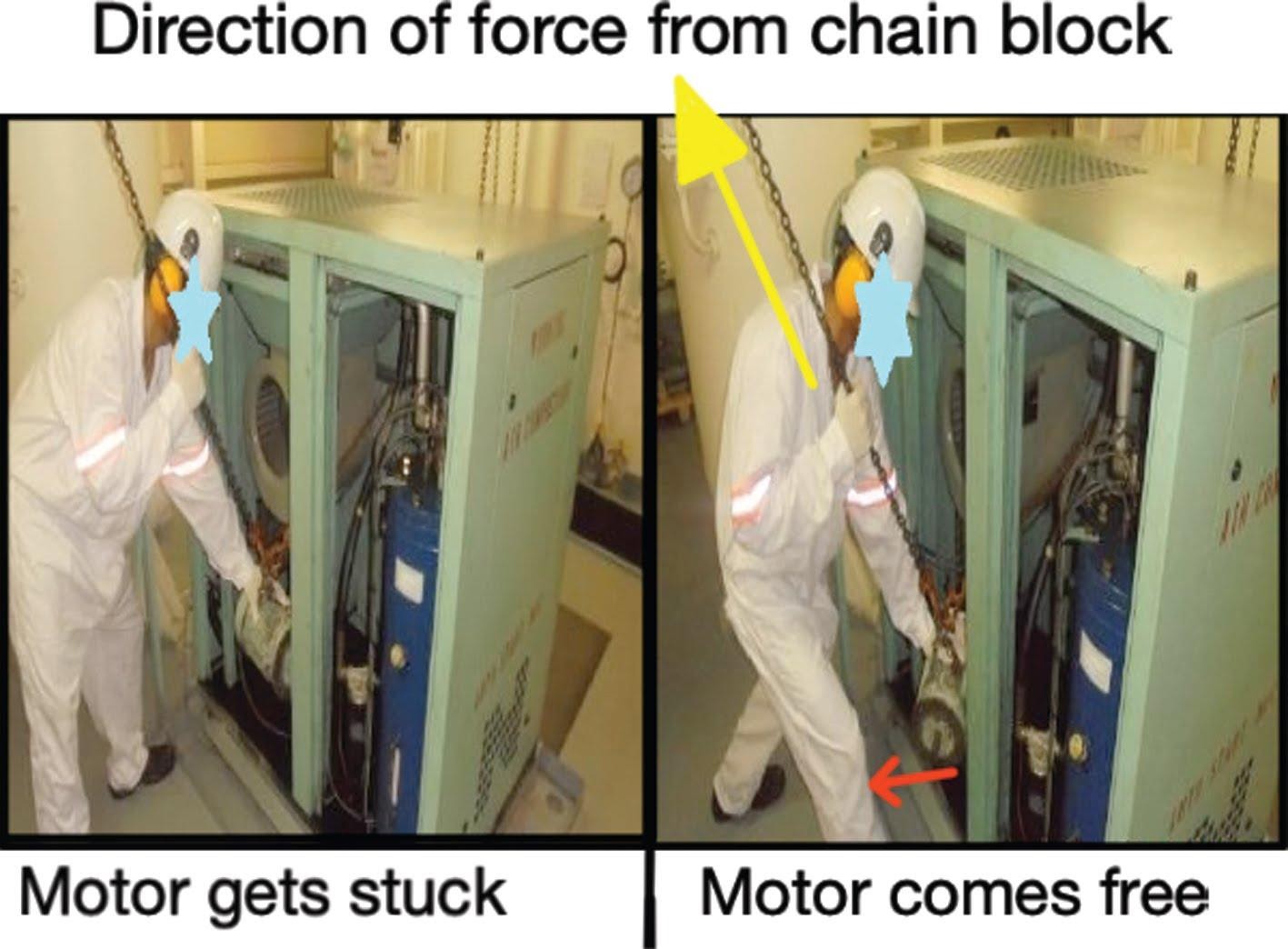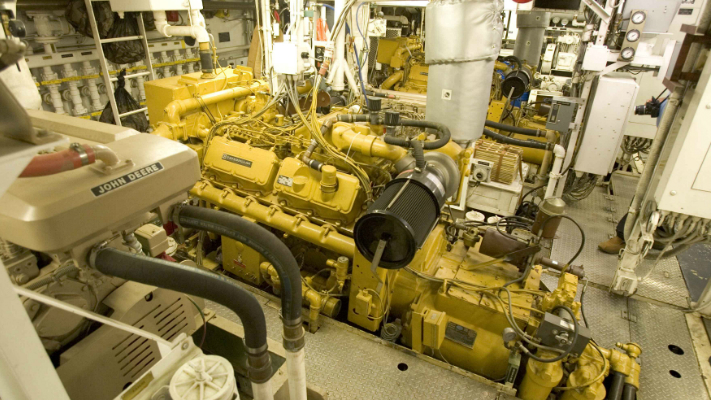A lifting hoist should be placed at right angles when removing any heavy load. If this is impossible a slewing hoist must be kept taut. In a recent Mars Report, a crew member was injured after being hit by a swinging compressor motor.
The Mars reports are compiled (anonymously) by The Nautical Institute to prevent other accidents from happening. A summary of what happened in this case:
Crew were tasked with removing an air compressor motor from its enclosing cabinet. Because working space around and in front of the cabinet was restricted, chain blocks were installed to lifting eyes on either side of the compressor to facilitate removal of the motor.

While the motor was being lifted and slewed outwards from its foundation, it became stuck. A crew member attempted to clear it. As he was doing so, the motor released itself and swung out under the force of the hoisting chain block, striking his right shin.
The victim sustained an impact injury and was given first aid.
Investigation Findings
The crew member had positioned himself on the axis of the motor swing while clearing it from the frame. He had not identified the risk associated with space limitation while handling the motor. The chain block that was used to slew the motor was held slack, hence there was no control on the motor’s swing.
Advice from The Nautical Institute
- A lifting hoist should be placed at right angles when removing any heavy load. If this is impossible a slewing hoist must be kept taut.
- This incident illustrates the importance of a detailed risk assessment and discussion during the toolbox meeting before any job.
- Consider all potential hazards such as space restrictions, lifting eye position and total control of the object during the manoeuvre.
Mars Reports
This accident was covered in the Mars Reports, originally published as Mars 201978, that are part of Report Number 326. A selection of this Report has also been published in SWZ|Maritime’s January issue. The Nautical Institute compiles these reports to help prevent maritime accidents. That is why they are also published on SWZ|Maritime’s website.
More reports are needed to keep the scheme interesting and informative. All reports are read only by the Mars coordinator and are treated in the strictest confidence. To submit a report, please use the Mars report form.








